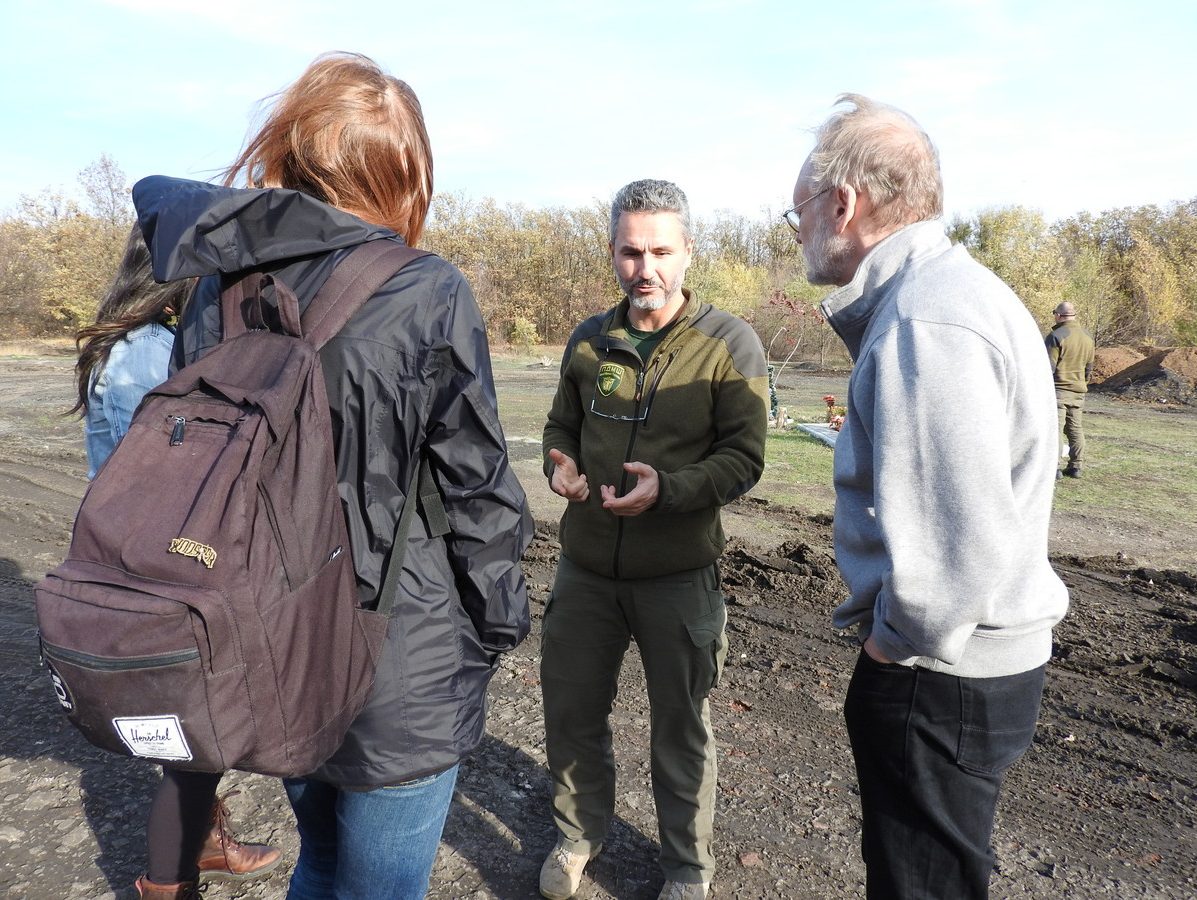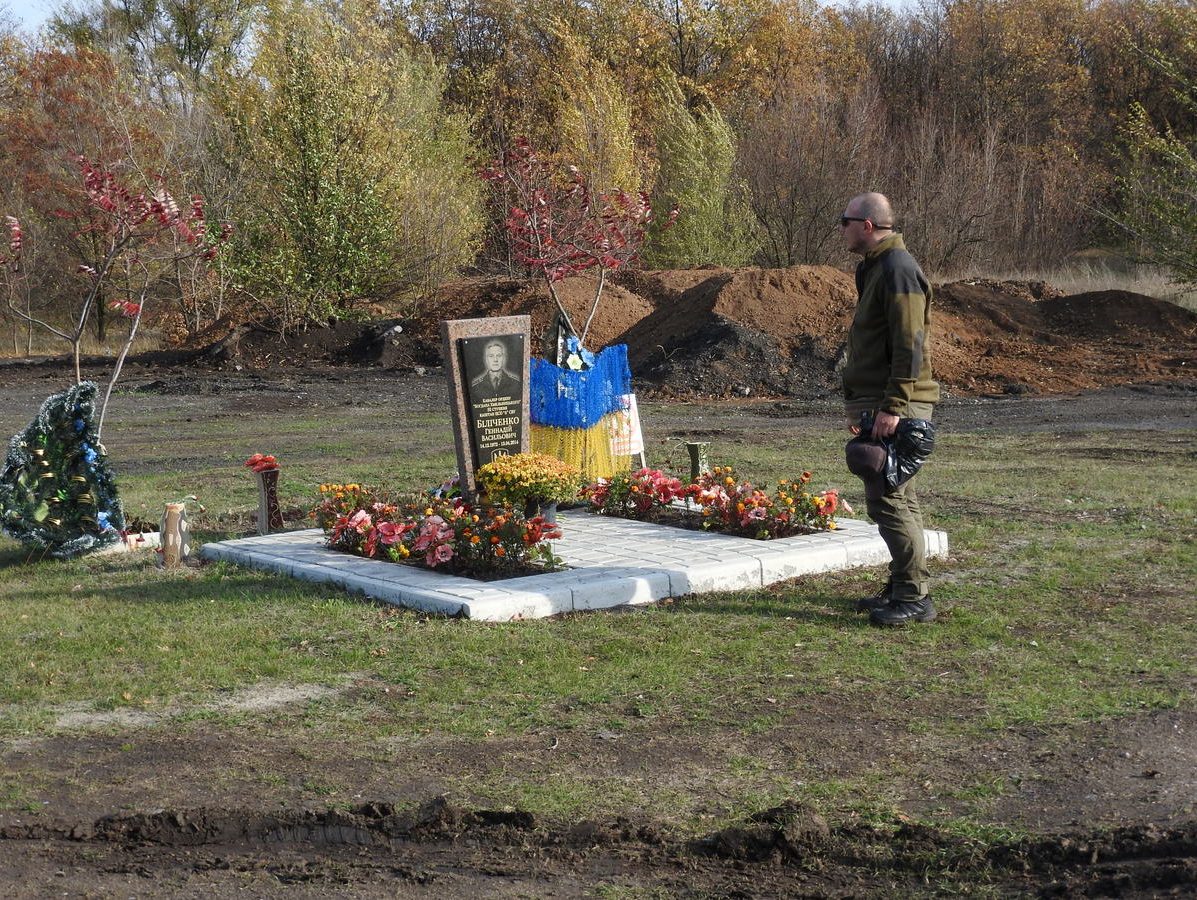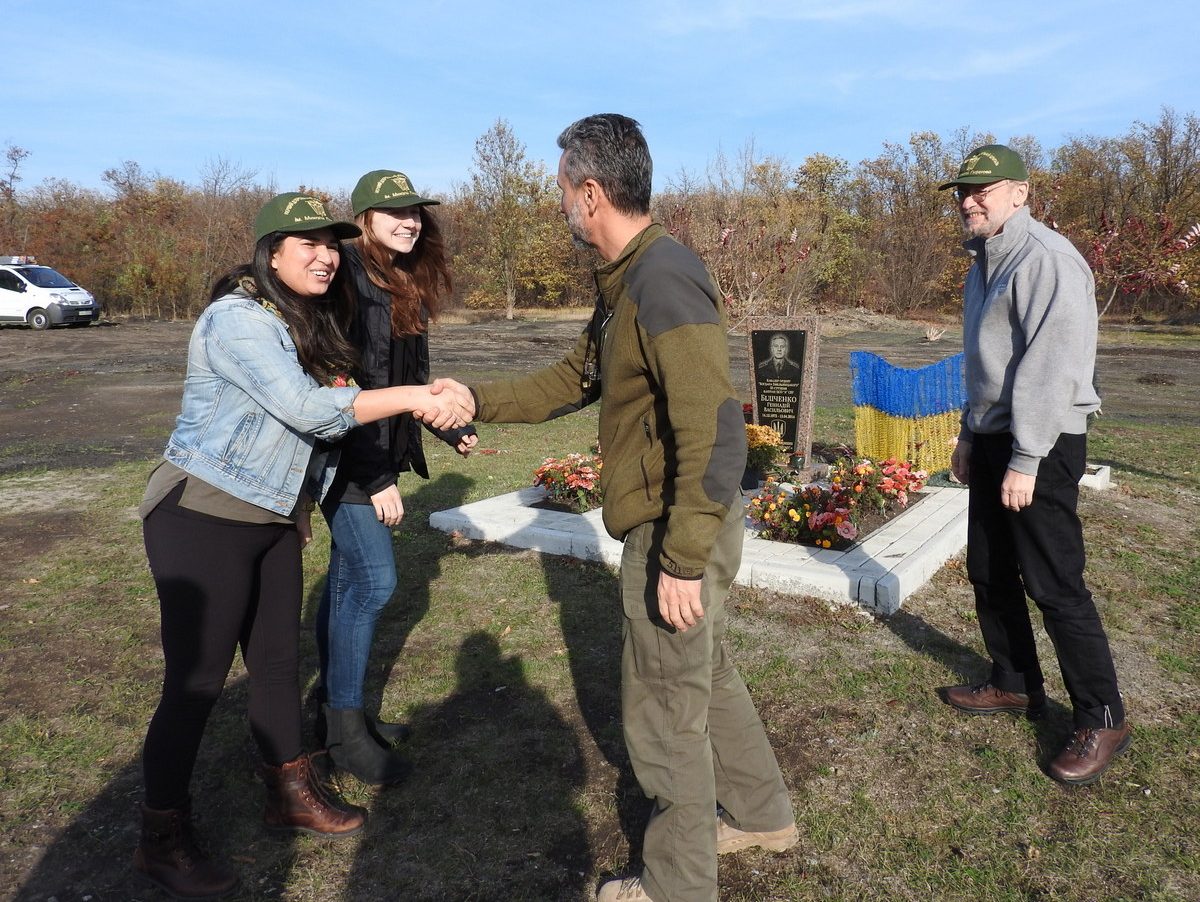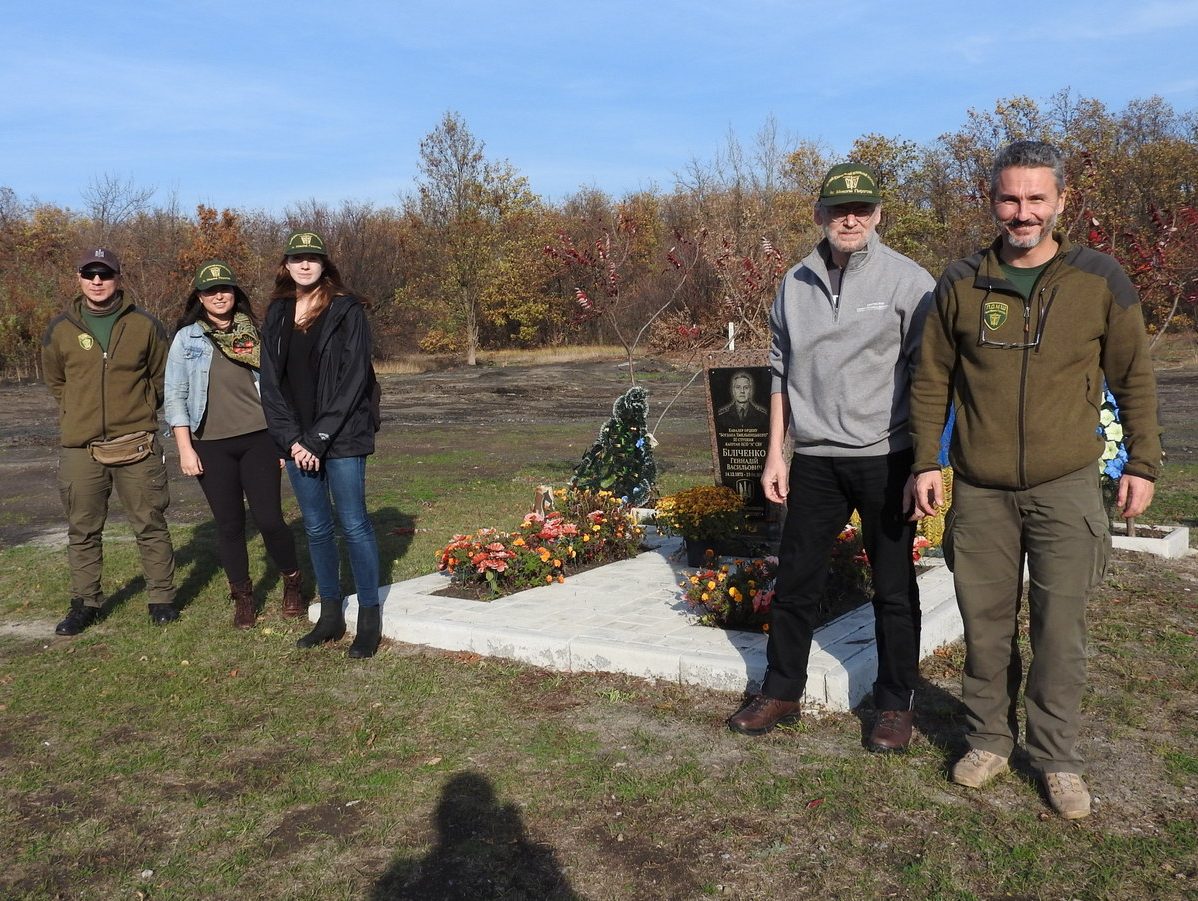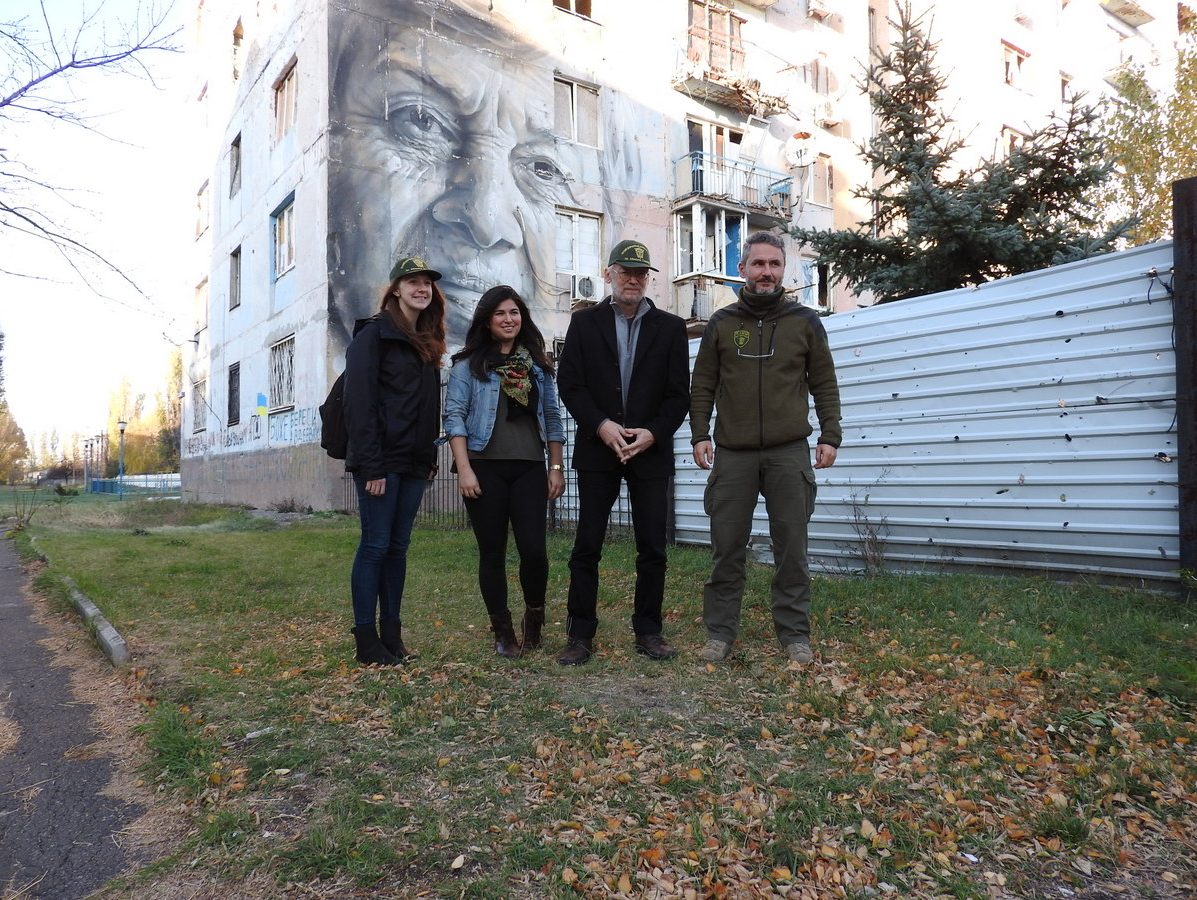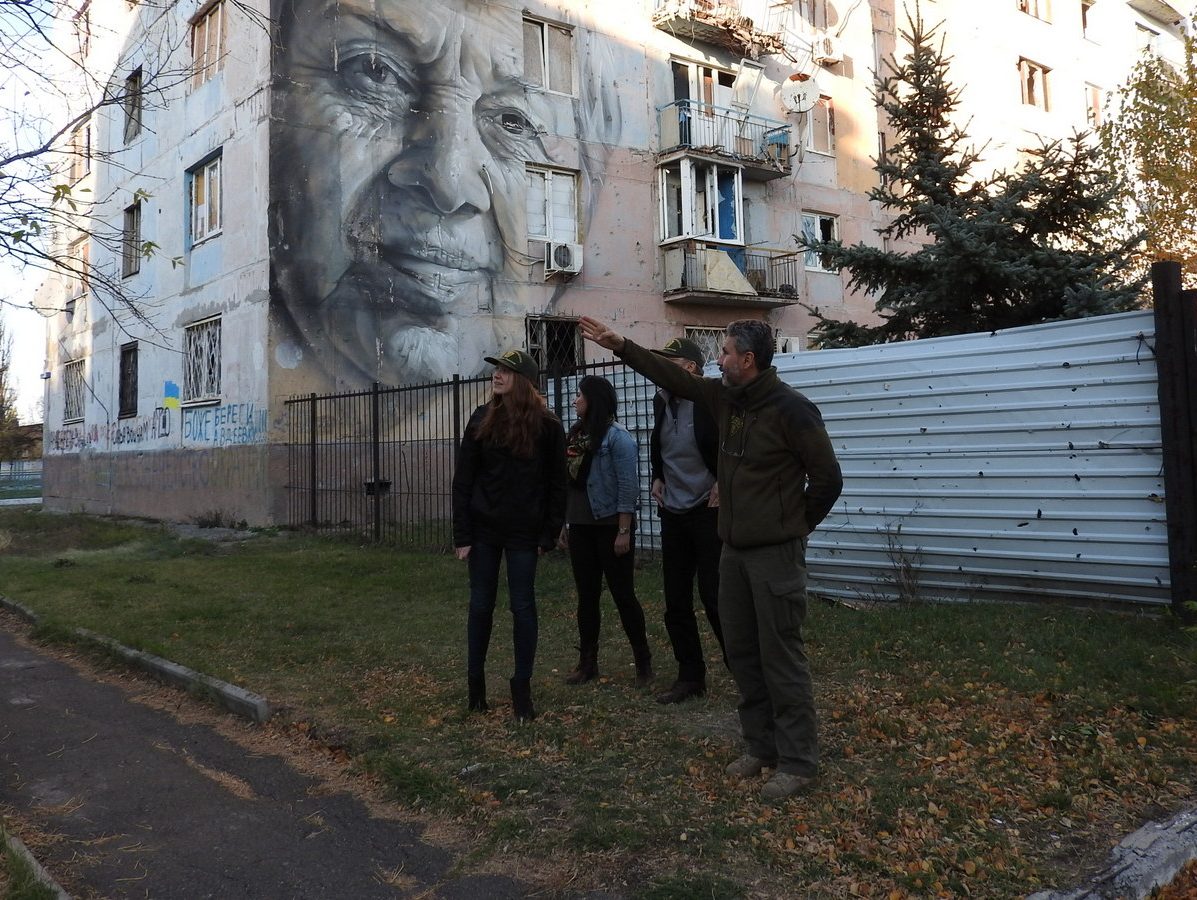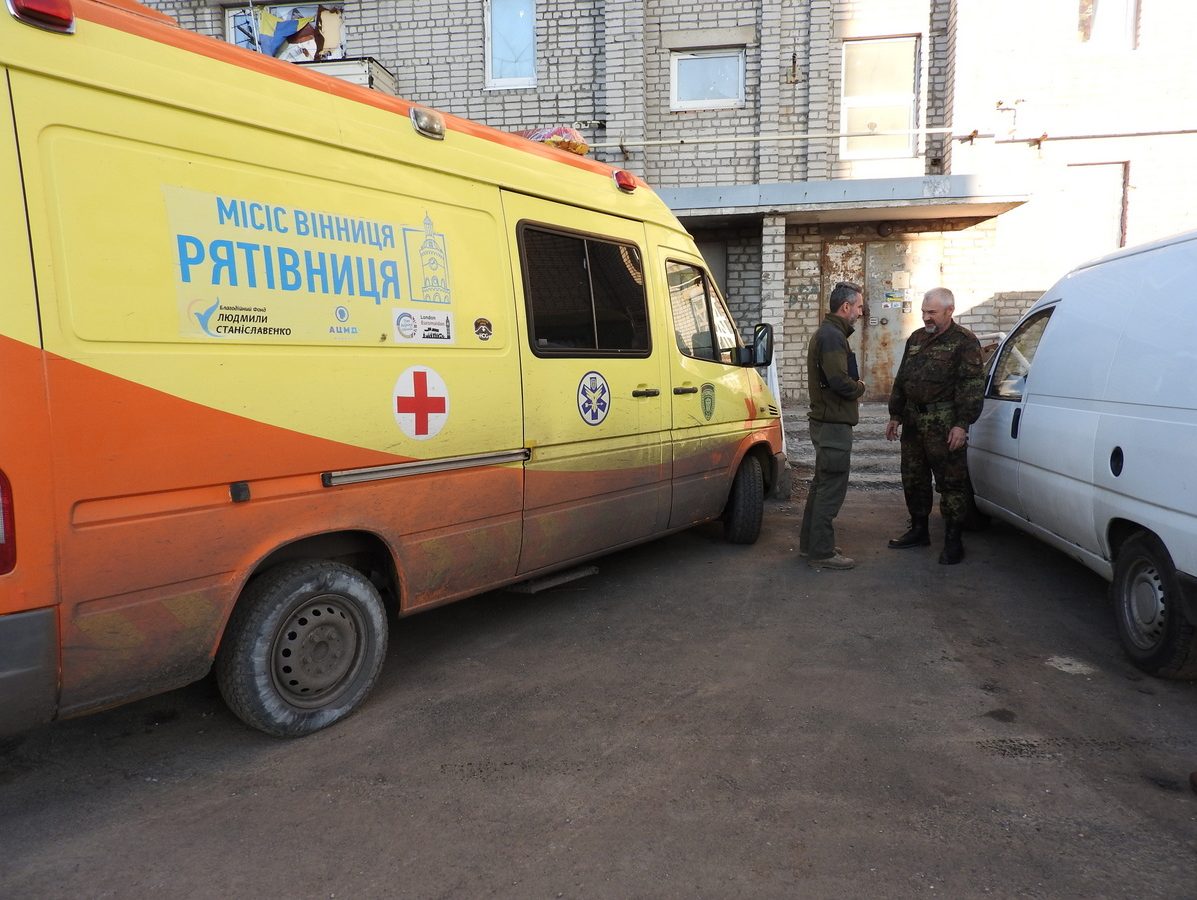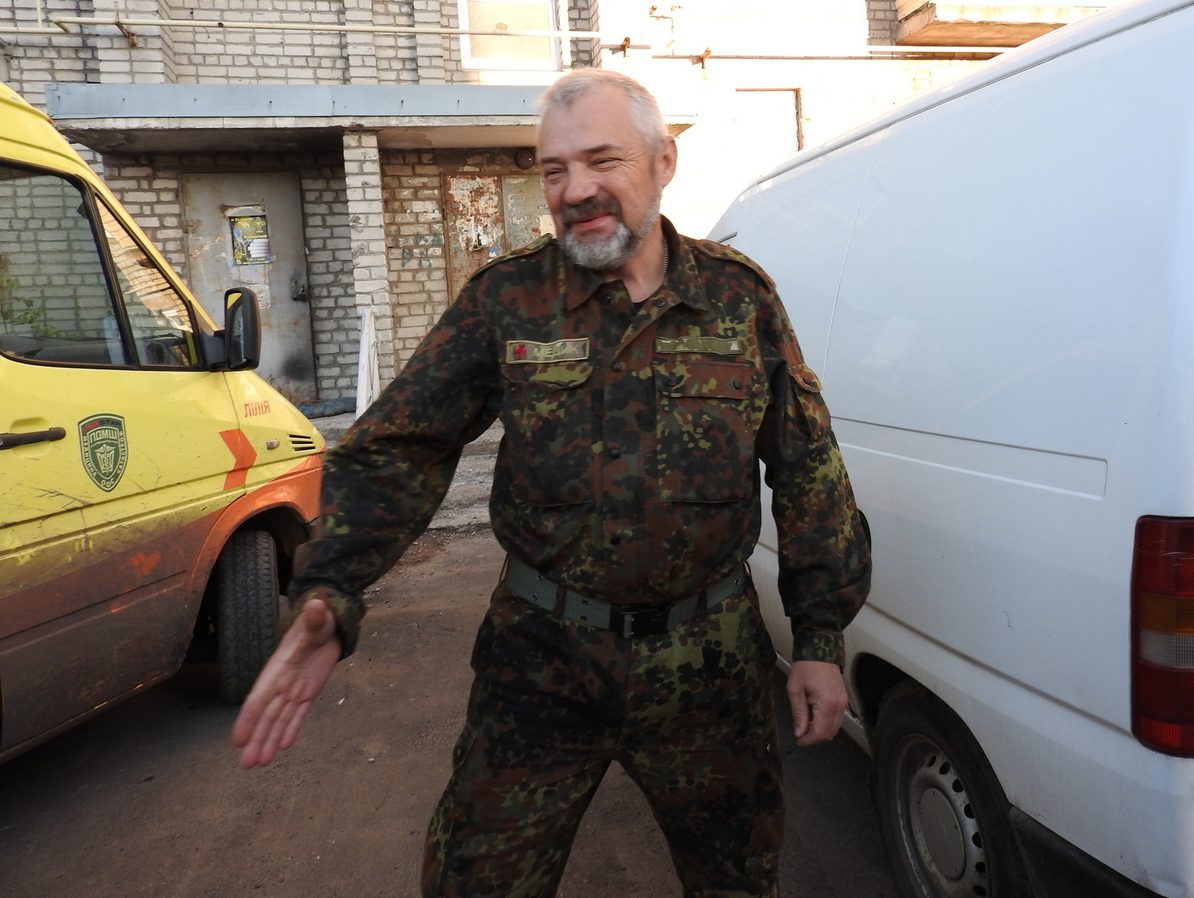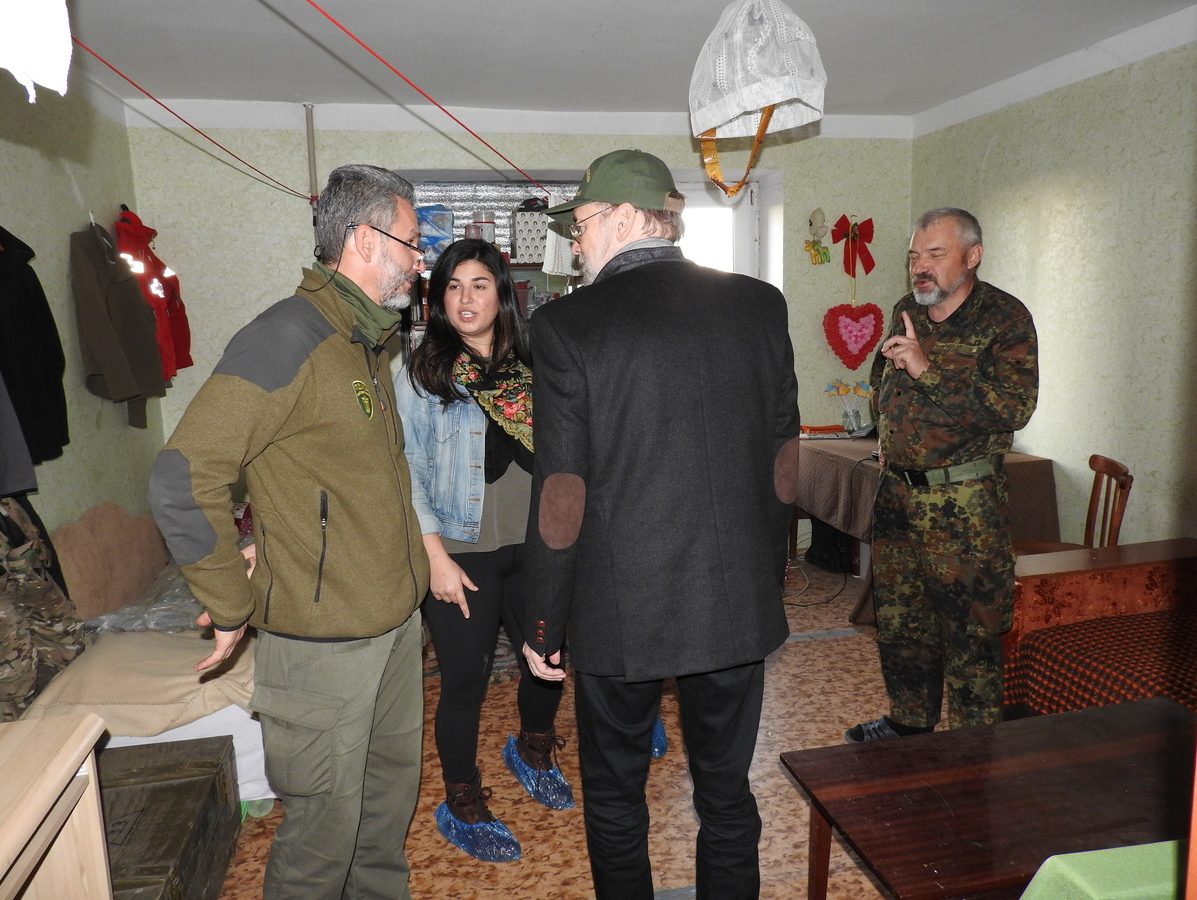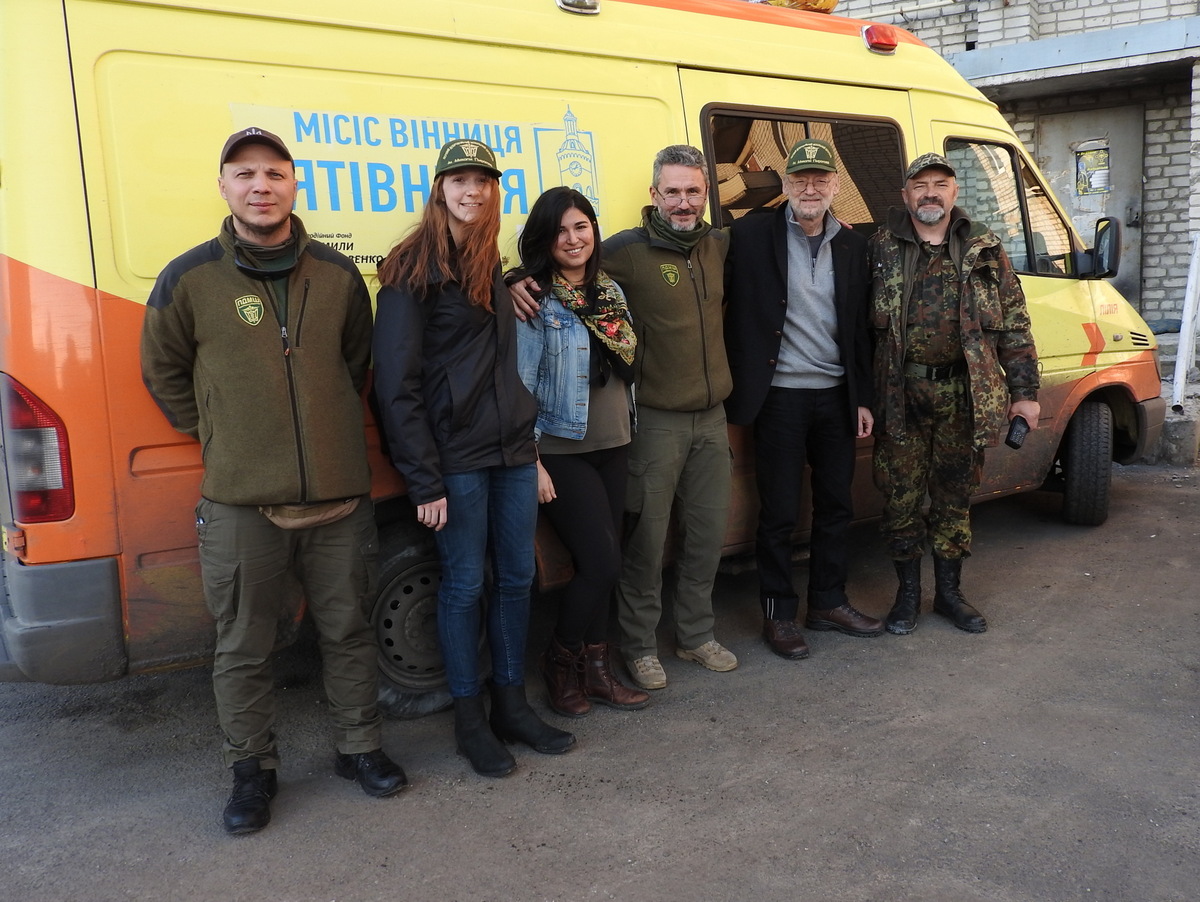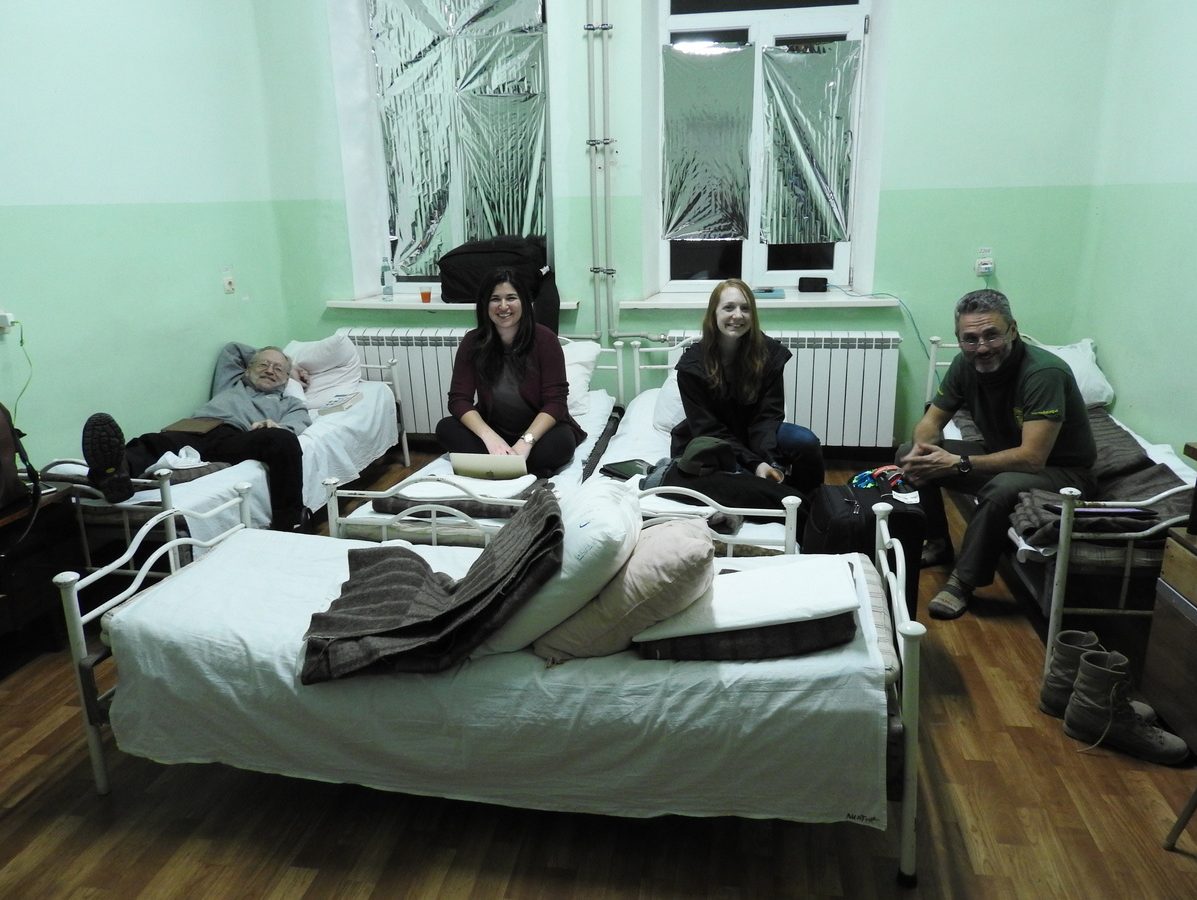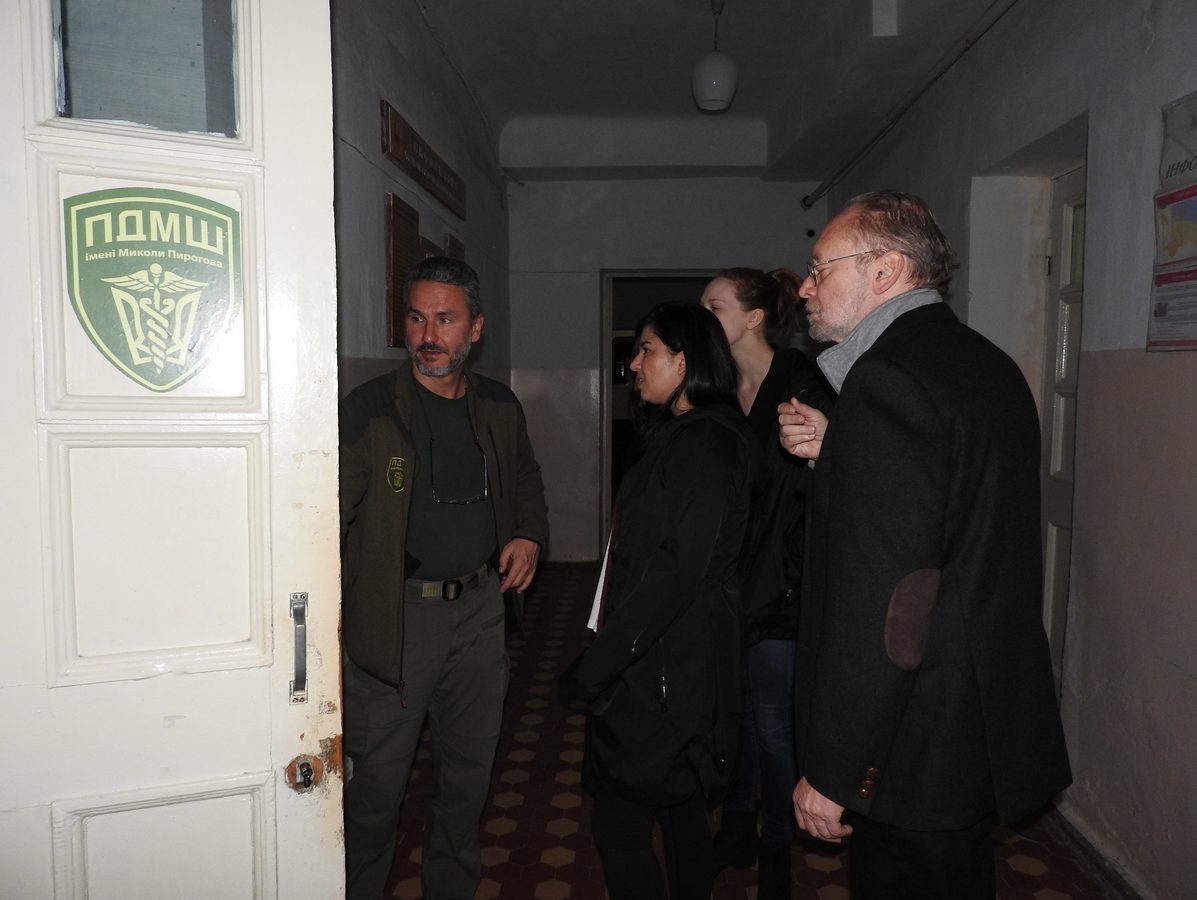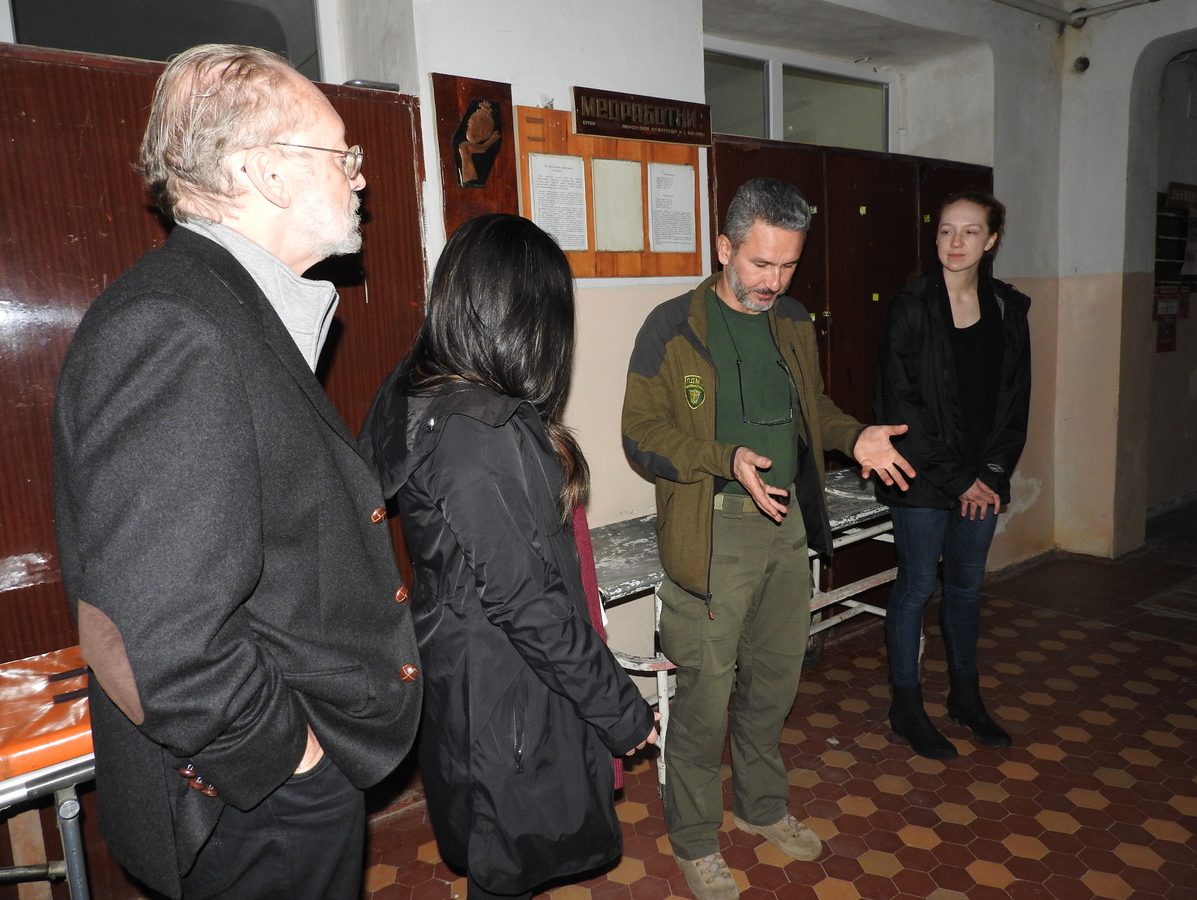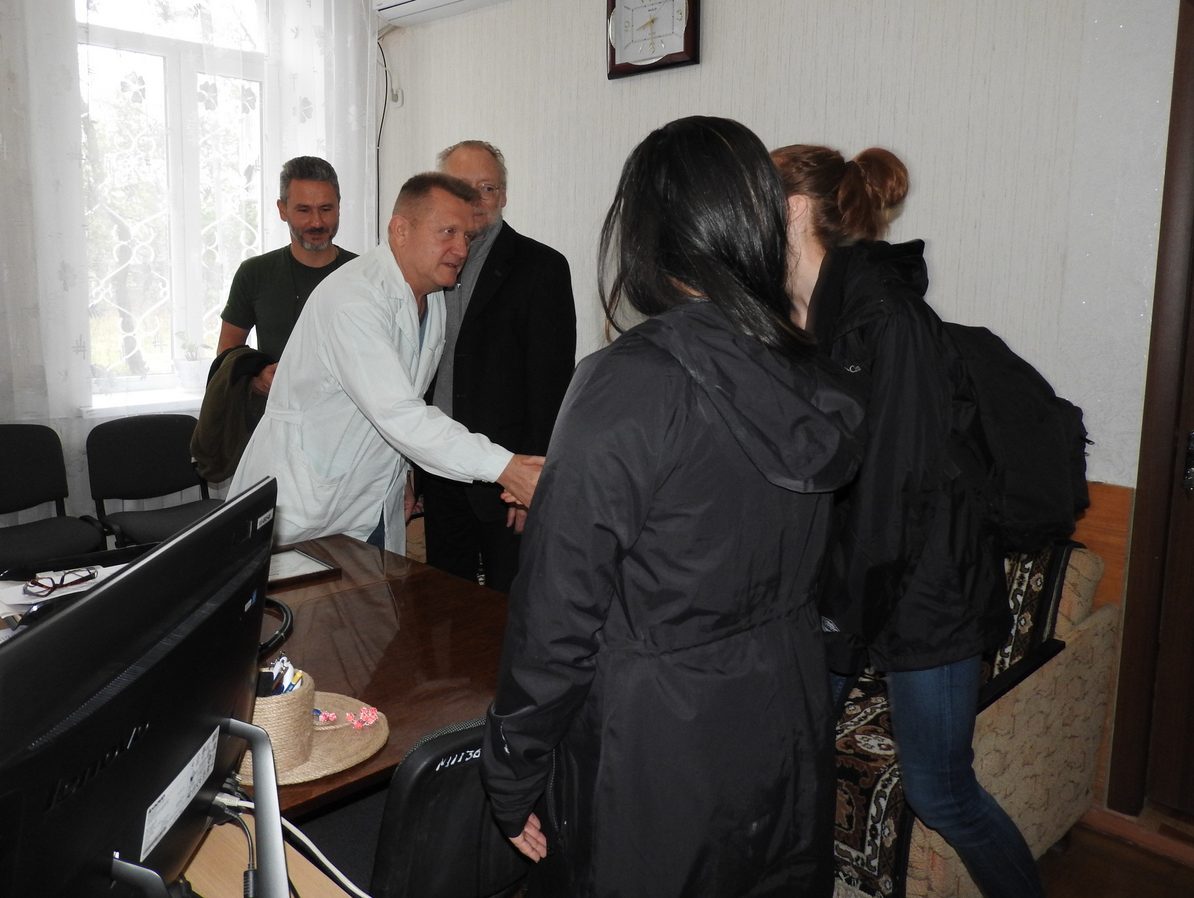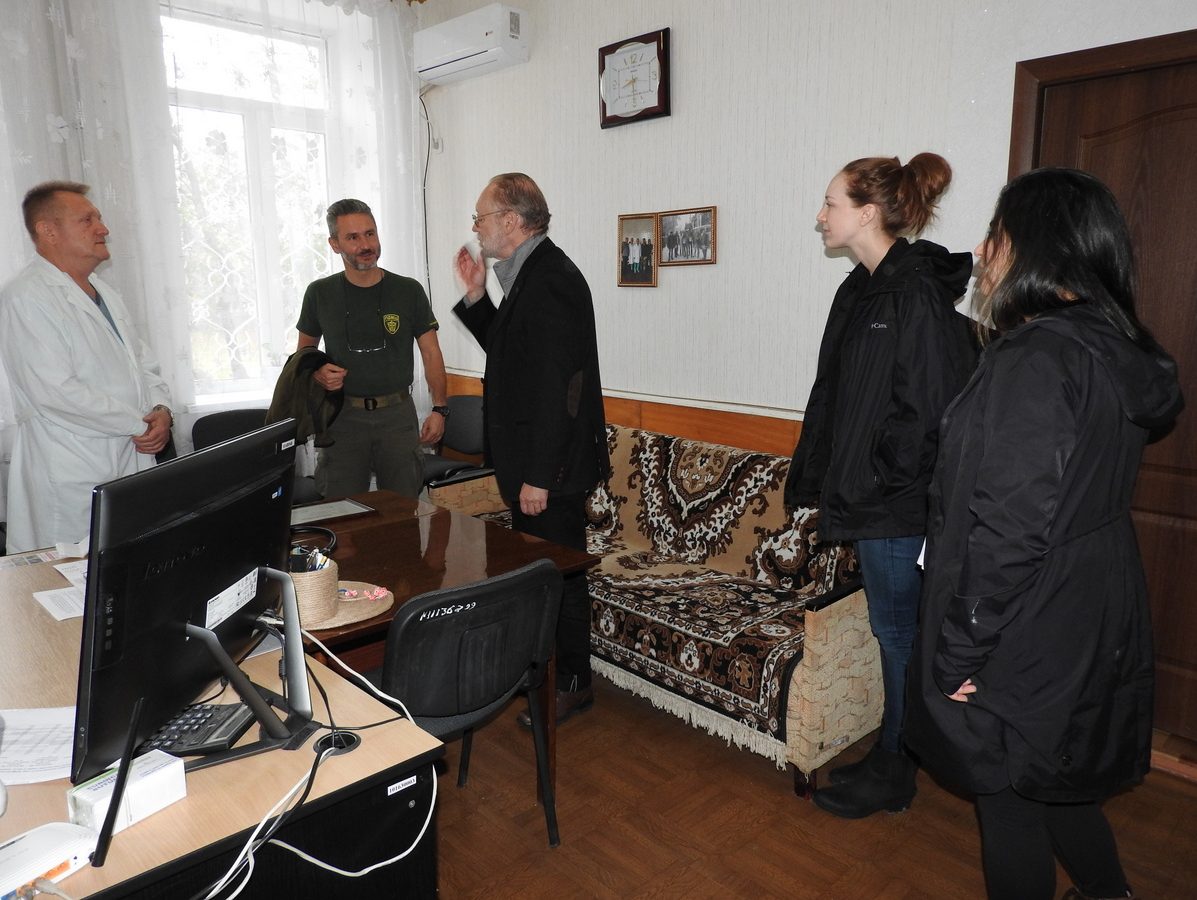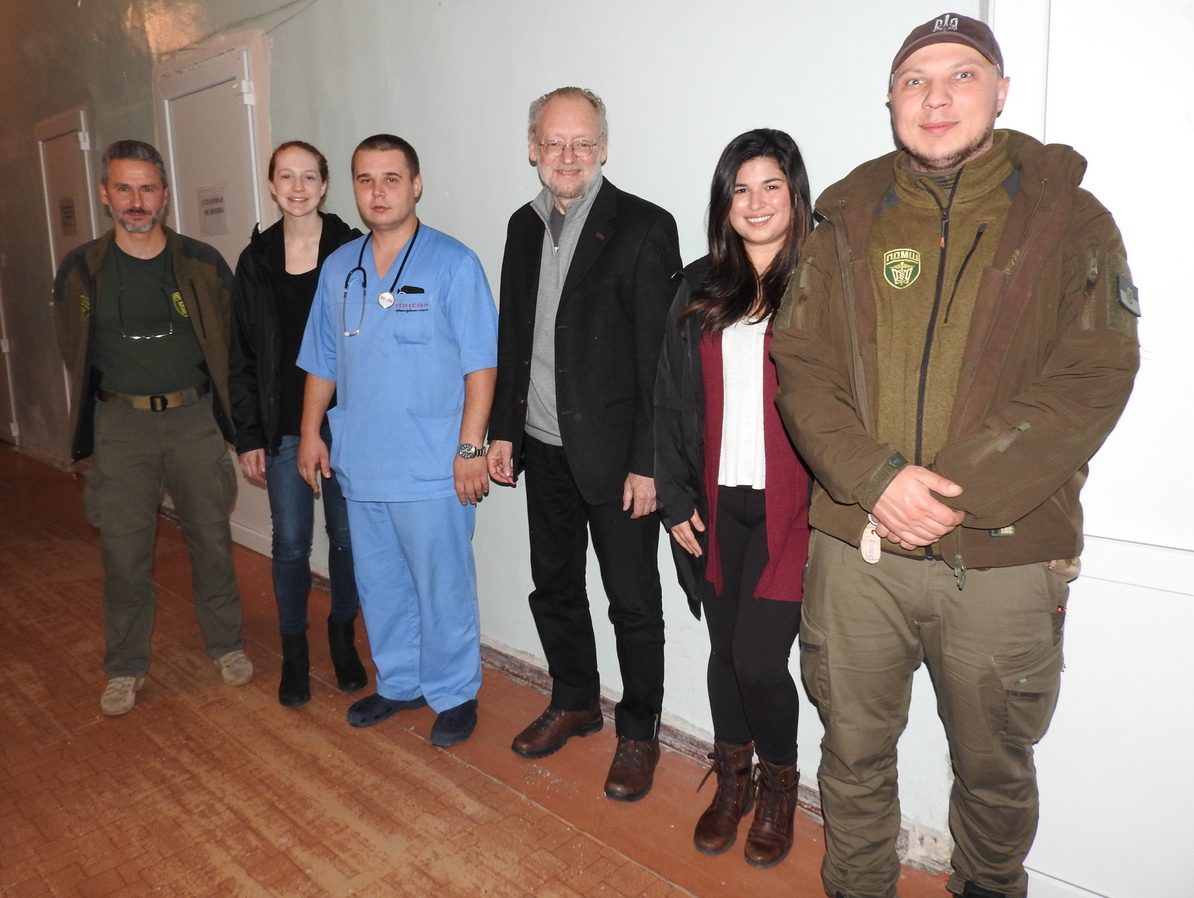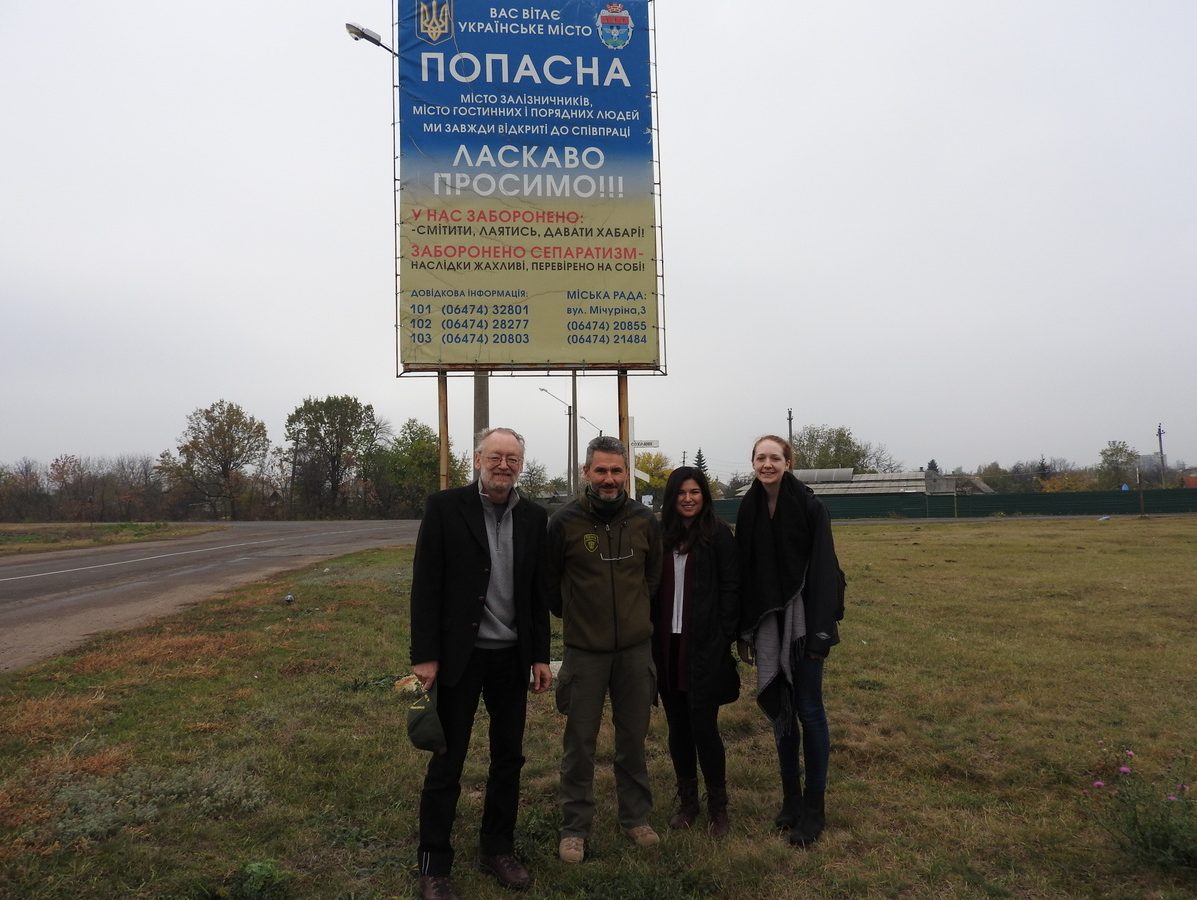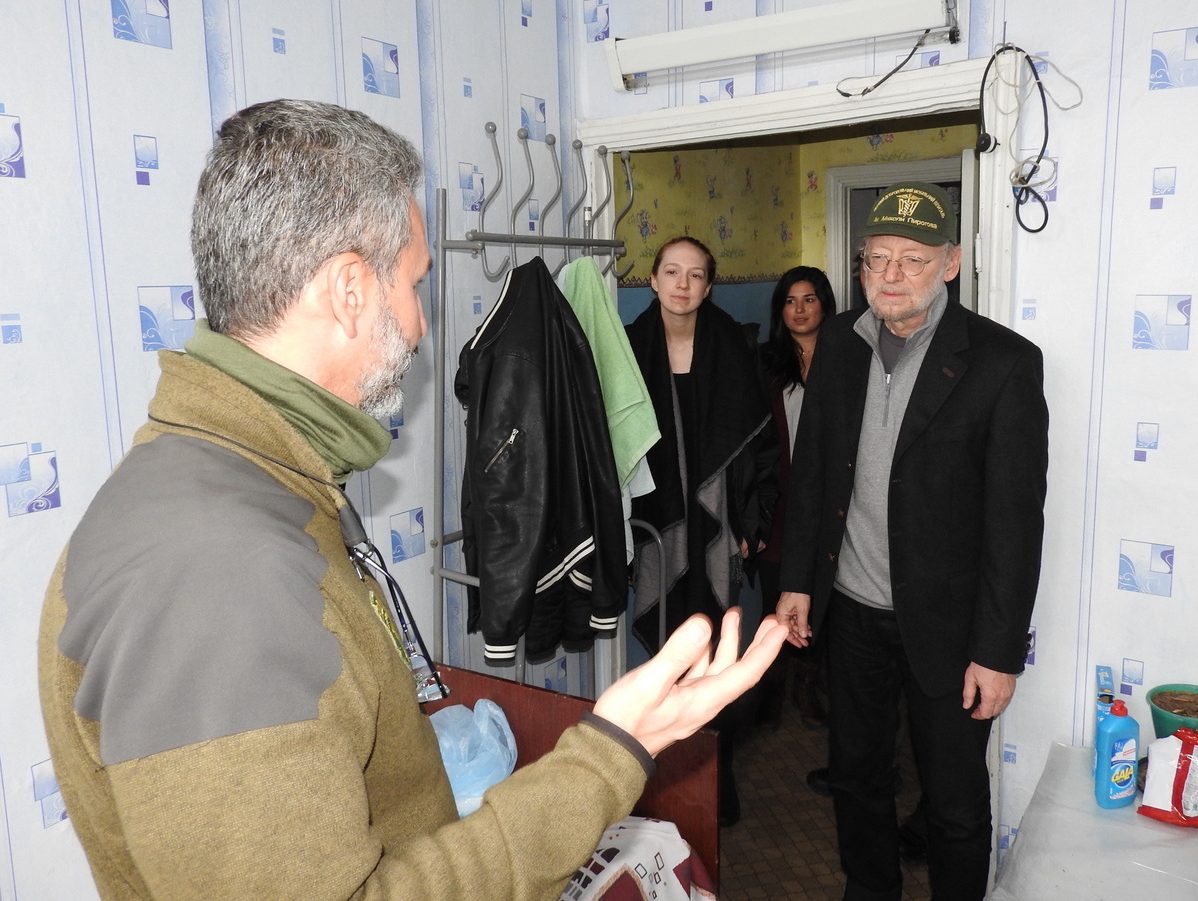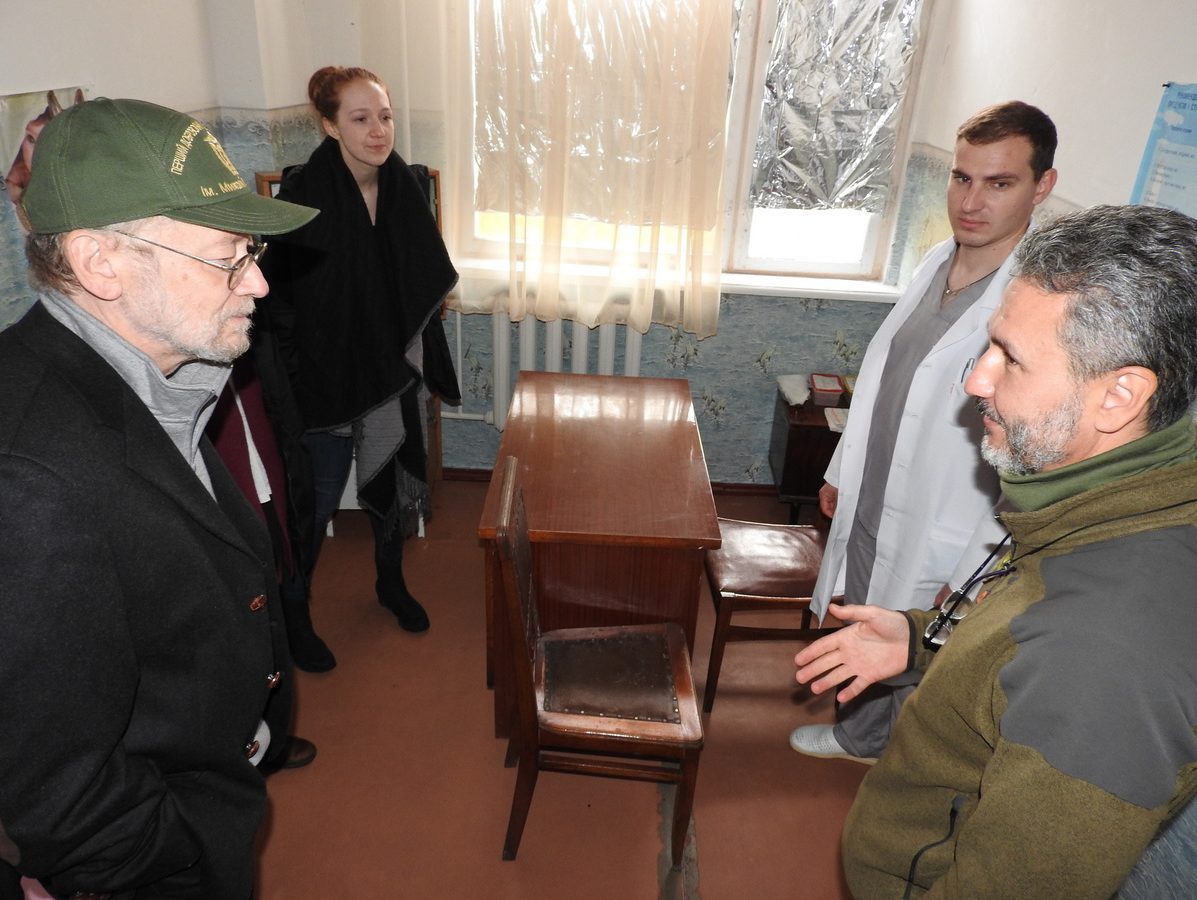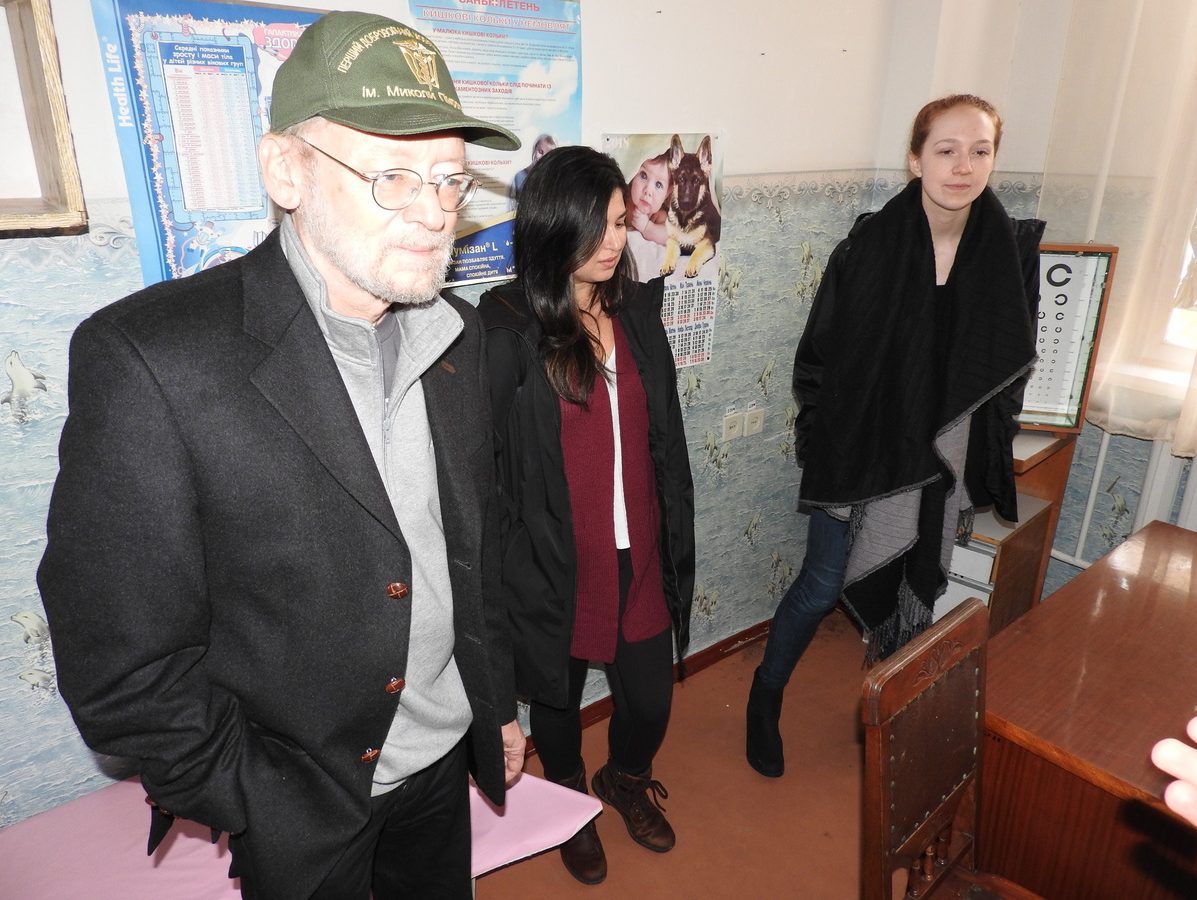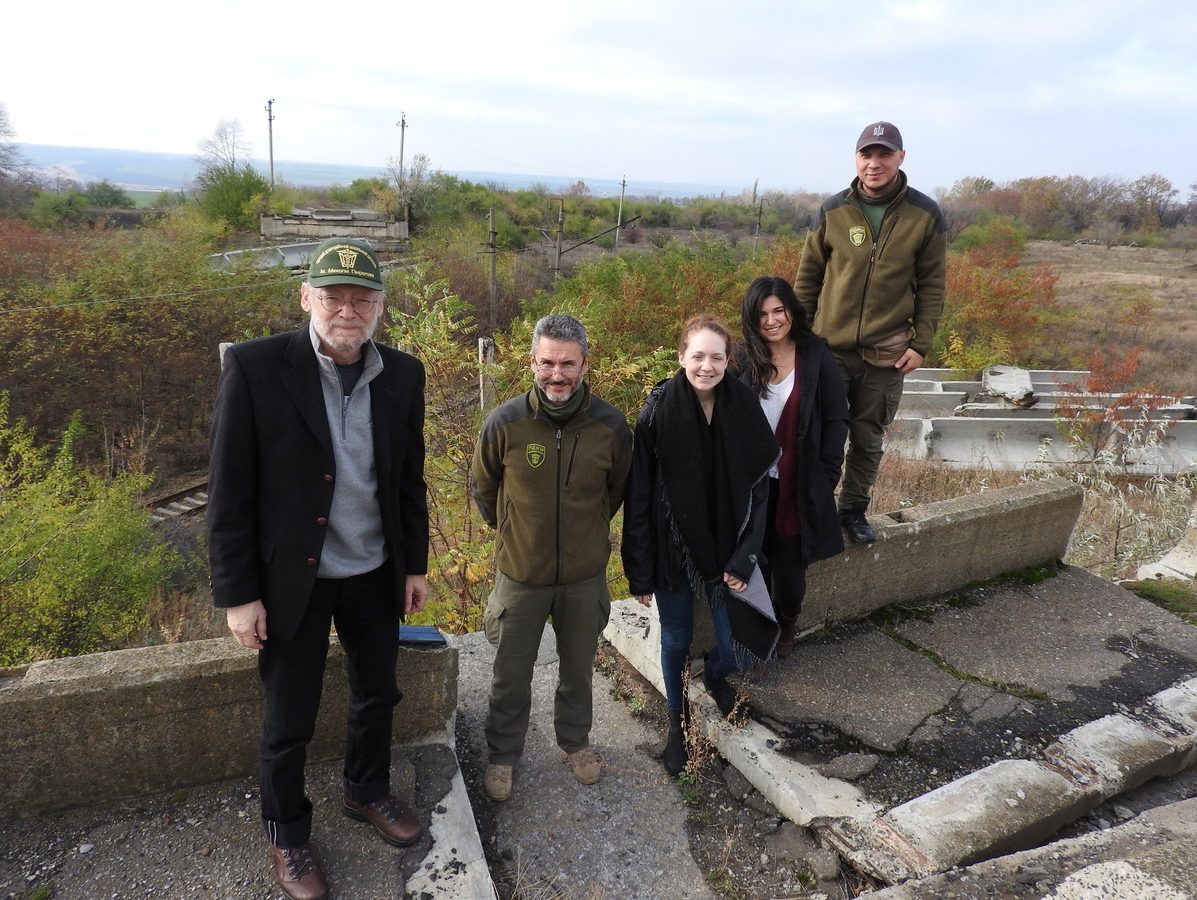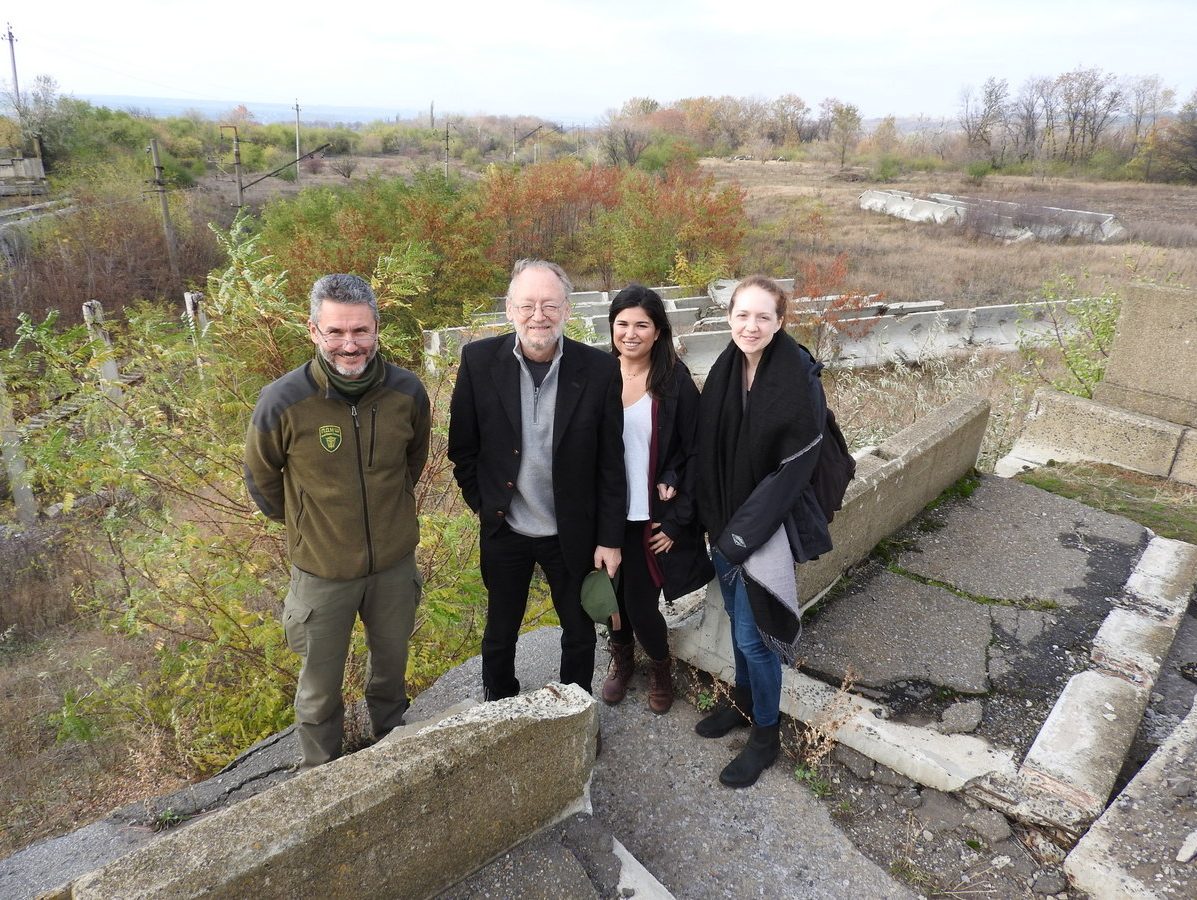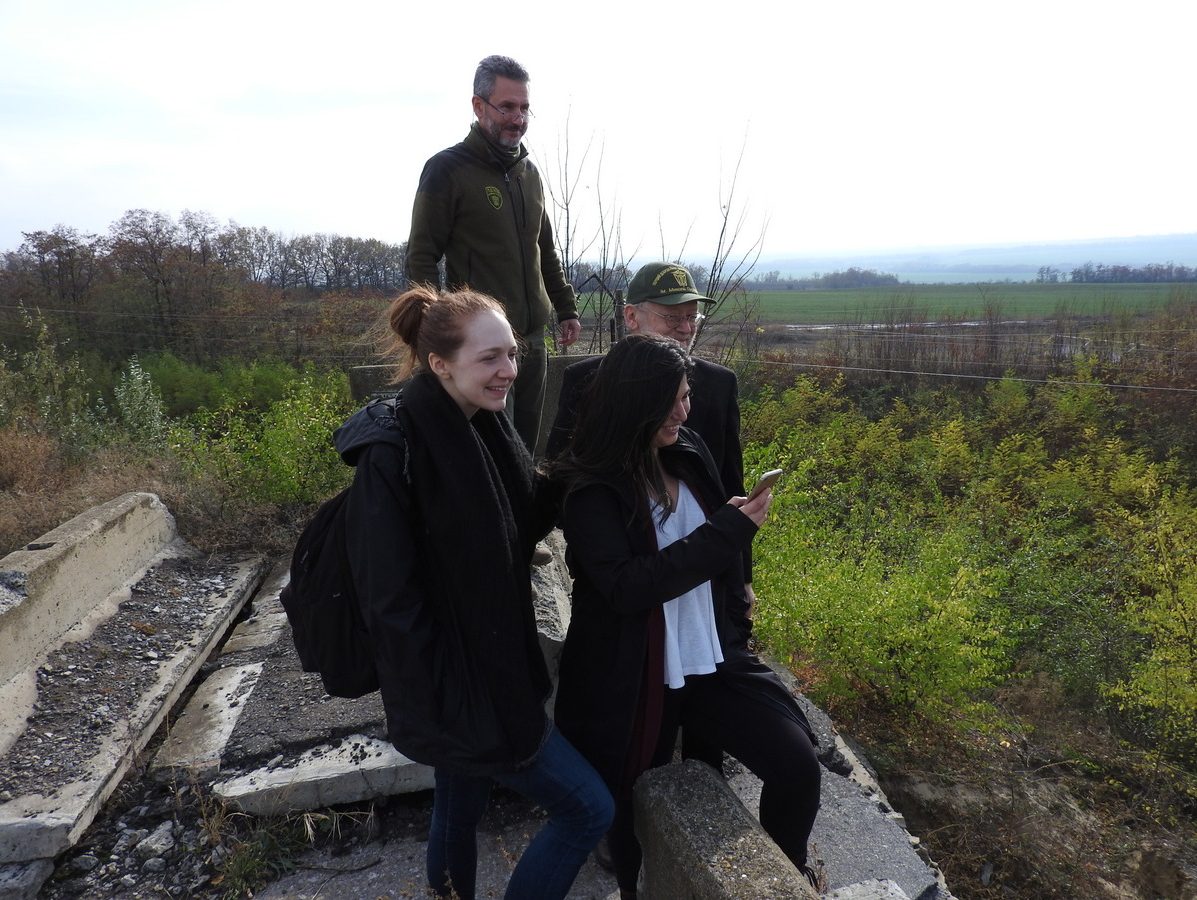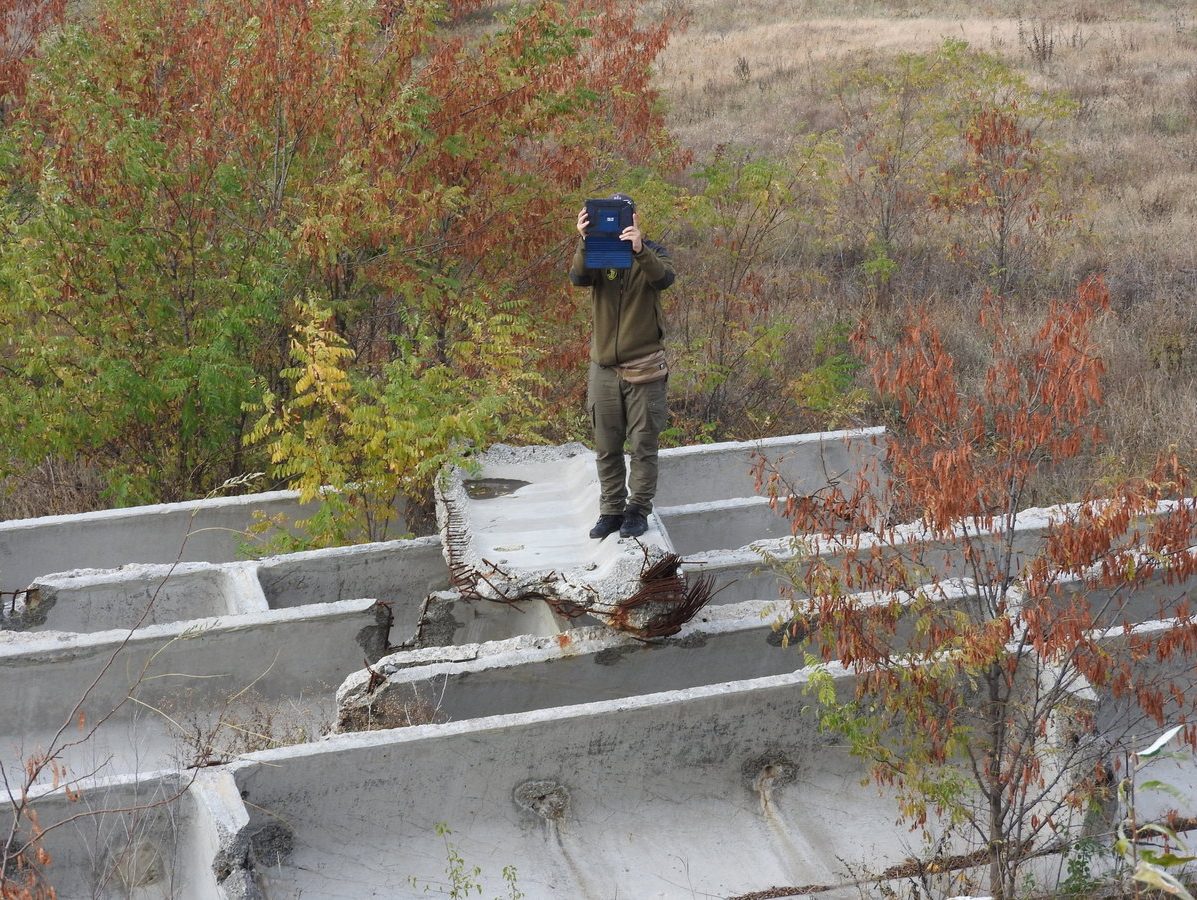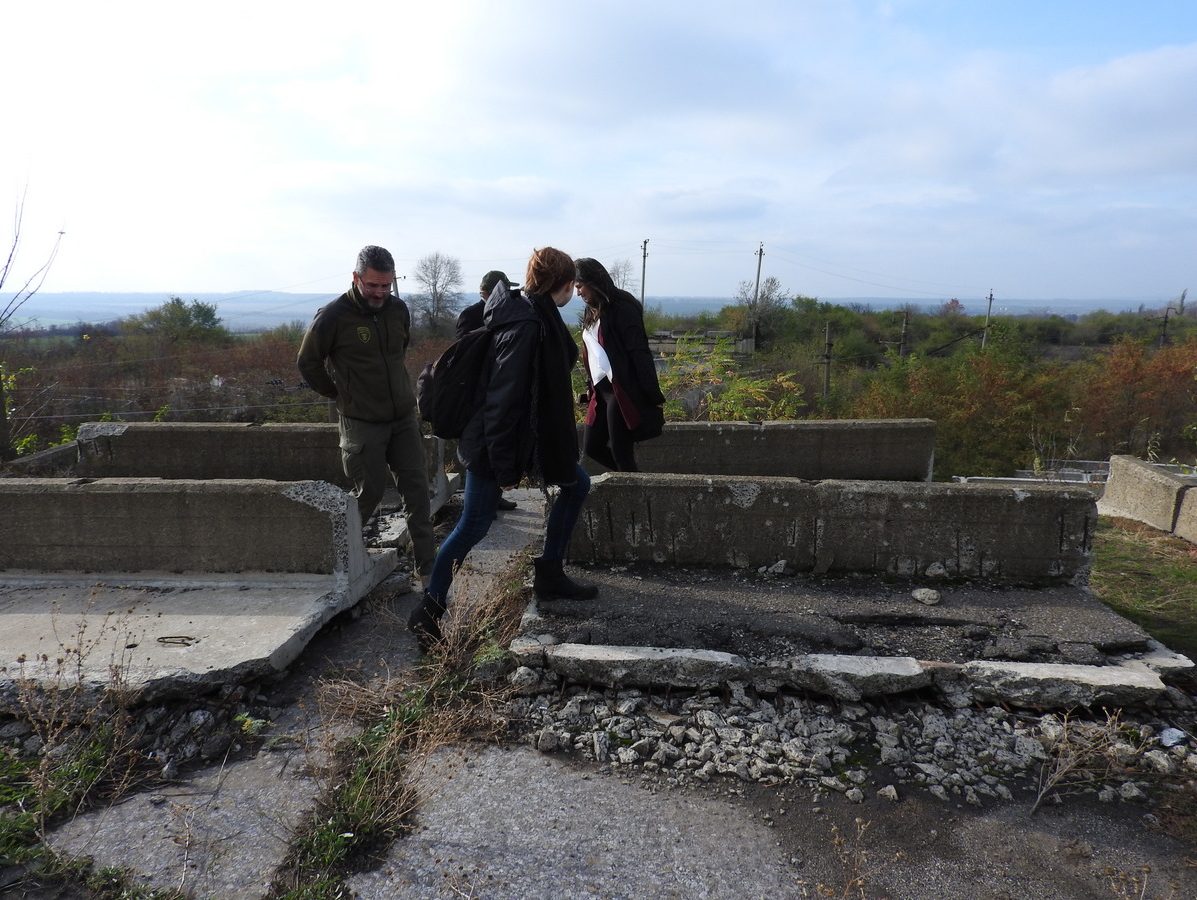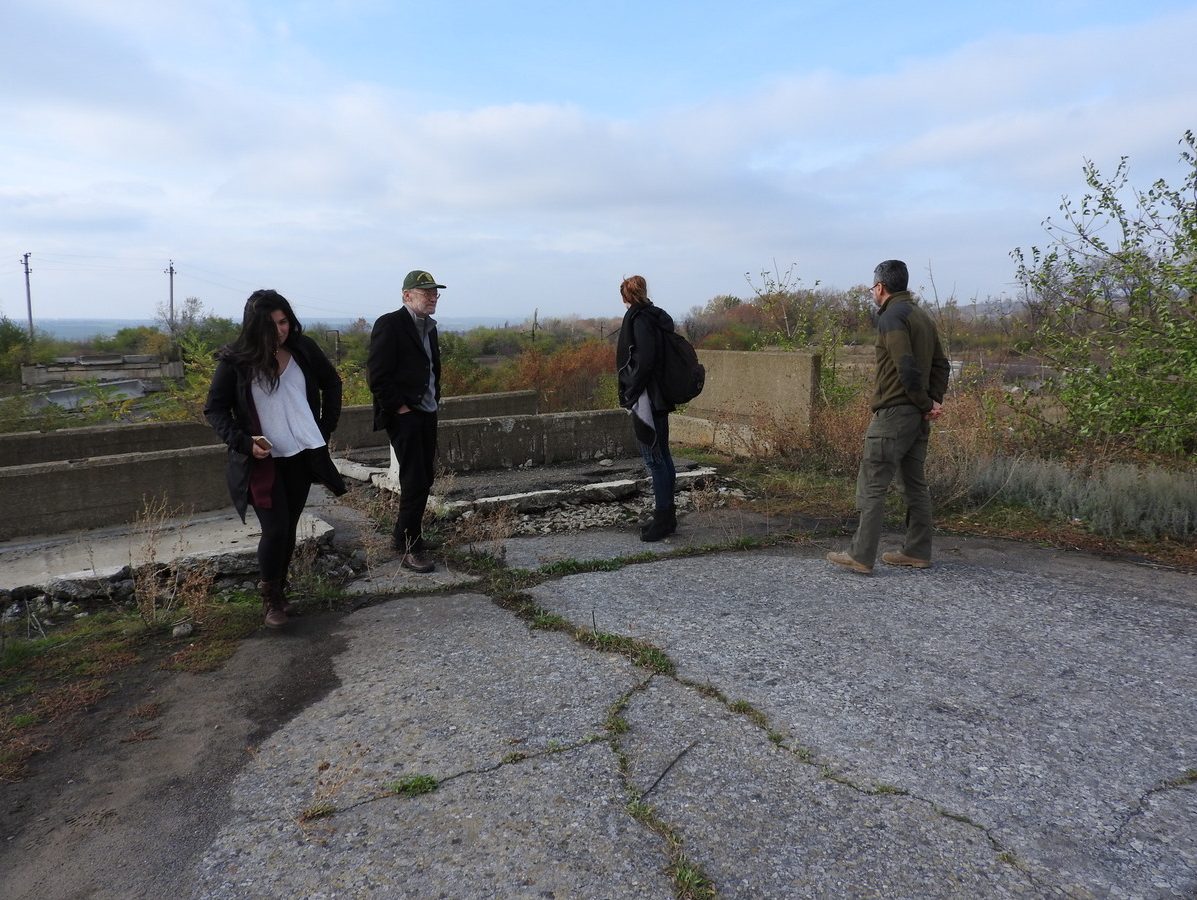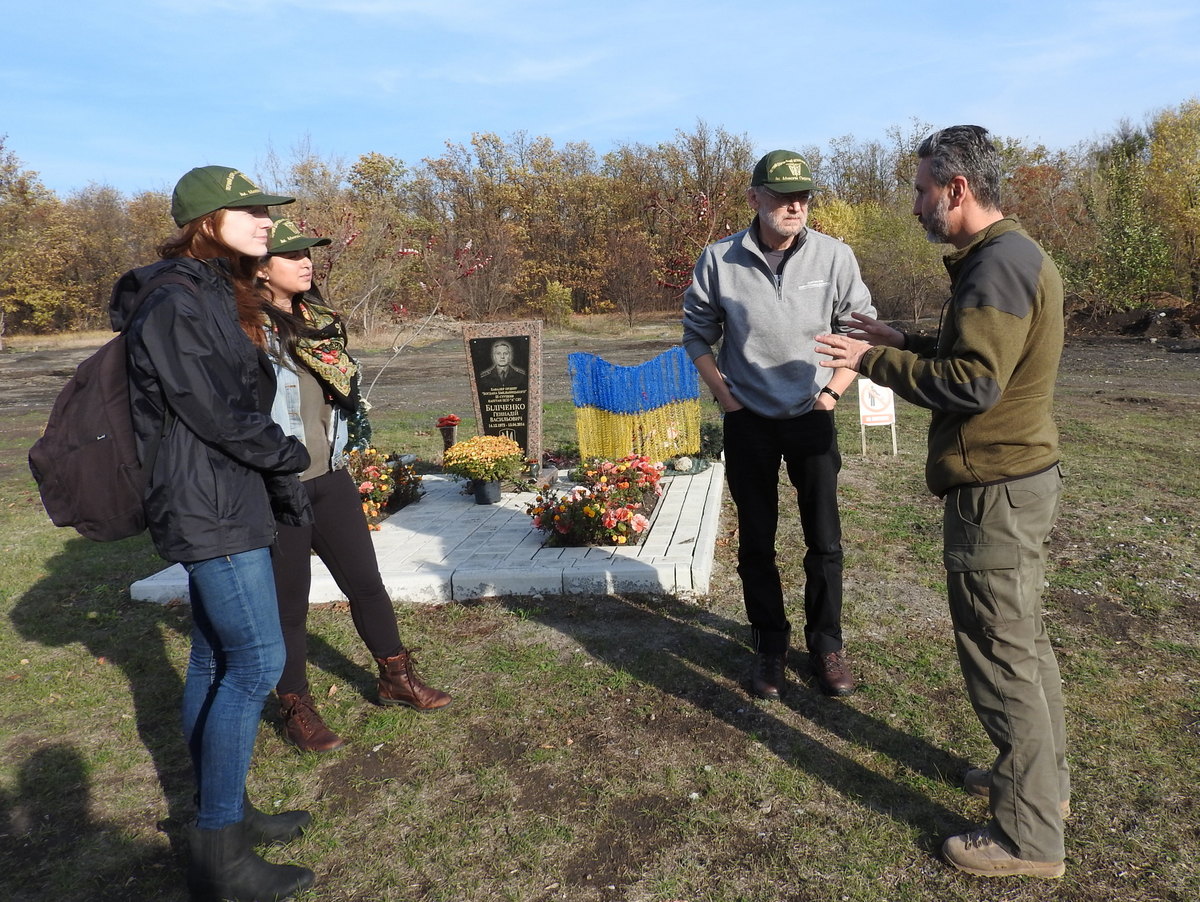
David Williams: “I wish that the rest of the world knew more about what’s going on in Ukraine”
Three U.S. constitutional law experts from the Indiana University spent the first two days of their visit to Ukraine going on a brief tour of its eastern region along the front line of the undeclared hybrid war waged by Russia against Ukraine. There, the guests also met with doctors of the Pirogov First Volunteer Mobile Hospital (PFVMH), who were on their voluntary monthly mission in Eastern Ukraine.
Prof. David C. Williams of the Maurer School of Law and two postgraduate students, Brittany DeSanctis Shelmon and Rachel Myers, all three from the Center for Constitutional Democracy, arrived in Kyiv on Saturday on a short knowledge-sharing visit. Although it is their first time in the country, the scholars, unlike a majority of visitors, decided to leave sightseeing in Ukraine’s capital for later, and on Sunday they went eastward to see what is going on there with their own eyes. PFVMH Supervisory Board Chairman Gennadiy Druzenko and Vice President for Logistics Ihor Buyvol brought them to the zone of Joint Forces Operation.
“I think the mobile hospital is doing unbelievably wonderful work under extremely difficult conditions”, Prof. Williams said after the trip. “And it’s clear they all doing that because they care about their country. And for an outsider, it’s terribly inspiring.”
The first stop of the tour was in Avdiyivka, one of the war’s hotspots in Donetsk Oblast. The guests were shown the consequences of the shelling of a residential area from the occupied territory over the front line, including the famous building with the mural by Australian artist Guido van Helten. The night was spent in a ward of Luhansk Oblast’s Popasna Central District Hospital, and on Monday the group left for Kyiv, visiting the hospital in Hirske en route.
Williams, who has had an experience of working during the armed conflict in Burma, said he watched some eight documentaries and read 17 books about Ukraine before this visit, though most of them from the pre-conflict time. Nevertheless, he says the situation here is pretty much the way he anticipated.
“It looks very much the way it looks in the documentaries. I spent a lot of time in the jungles of Burma in war zones there but those are highly mobile war zones. The thing that most struck me is the frozenness of the nature of the conflict in Ukraine. In Burma, it’s moving all around the country. And here, there is an occupied town, and here is a town that’s not occupied, and the mortars come over at night, and that’s really different from what I have seen in other places”, he said.
He also confessed that he finds it difficult to understand the nature of the conflict in Ukraine “where the mortars go over the front line for no apparent reason at all.” “There is no obvious desire to gain new territory. It’s just shelling for the sake of shelling, which is not something I’ve seen before. It seems very strange” said the professor.
Brittany Shelmon said she is most surprised with how close to the conflict areas many people still live, not choosing to relocate. “Usually we have seen that, what I understand, people tend to move away from a conflict zone,” she said. She also added, “I think that there is a misconception of the conflict in the [U.S.] media in terms of who’s fighting whom. I don’t think it’s that uncommon for people to think about it as a civil war.”
Summing up the trip, Prof. Williams said, “We’ve seen only a piece of Ukraine, the warworn part of Ukraine. I wish that the rest of the world knew more about what’s going on here and about the bravery and idealism of the people under fire – the way that they keep carrying on with their lives, even though they are under threat every day”.


